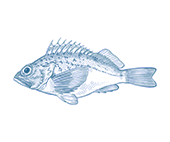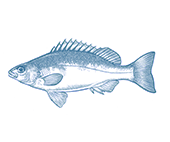




- Eat Less
Wild Caught
Region:
NSW
Note: The Tasmanian fishery for vongole in Ansons Bay is currently closed following a collapse of the population due to overfishing and environmental factors (severe flooding in 2014 killed many vongole). A 2018 review of vongole numbers showed the population has not yet recovered. If the fishery re-opens, the fishery will be assessed for inclusion in this Guide.
- Pipis are hand collected from the intertidal zone of beaches along the NSW coast.
- NSW Pipi populations are slightly below healthy levels, but appear to be recovering.
- The highly targeted collection method means other marine animals are not harmed.
- Pipis and vongoles are important prey for birds, rays and fish.
- Pipi harvesting does not impact sensitive habitats.




Treat clams as you would mussels, steam or stir-fry them until they open to reveal their deliciously briny, chewy and meaty flesh. Clams are great as a standalone meal, cooked with wine, garlic, tomato and fresh herbs. They also work well with Asian flavours such as ginger, chilli and spring onion, or a classic XO sauce. Clams can also be tossed with noodles or pasta. Spaghetti vongole is a classic clam and pasta dish well worth a go. A fun way to cook clams is baked in the oven in a paper parcel. This method is known as ‘en papillote’. This seals in all the delicious juices and ensures that clams don’t overcook. Try them with butter, lemon and herbs, and bake in a hot oven for 15 minutes until the parcel ‘puffs up’ full of steam.
- NSW Estuary General Fishery (115t of Pipis in 2020/21)
Pipis are found on coastal surf and estuarine beaches around Australia, and have an important role low in the food chain of high energy and estuarine coastal ecosystems.
Pipi fisheries hand collect or rake up these molluscs from the intertidal zone. Pipis grow fairly quickly and are resilient to fishing.
Overfishing of pipis in NSW in the late 2000’s led to stricter harvest controls and allowed some populations to rebuild to healthy levels. Pipi numbers are monitored annually to prevent overfishing, but are slightly below healthy population levels. With modernised scientific assessment and catch limits in place, the populations appear to be recovering towards healthy levels.
Hand collecting and raking collection methods are effective at targeting only pipis, resulting in a negligible extraction impact on any other marine or beach-dwelling species. As collection is so highly targeted, discarding of unwanted catch is not an issue, and undersized pipis can be returned without harm.
Pipis are important prey for many birds, fish and rays.


